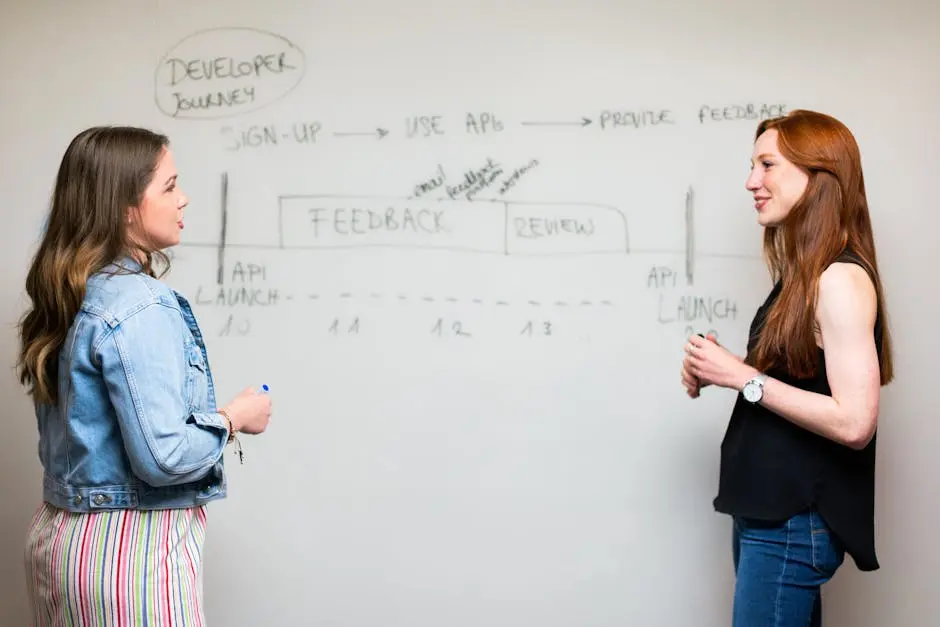In the fast-paced world of mobile app development, getting an MVP (Minimum Viable Product) to market quickly is vital. However, to ensure your MVP meets user needs, incorporating user feedback is essential. Let’s explore why user feedback is crucial for MVP mobile development.
Understanding the Role of MVP in Mobile Development
An MVP is the simplest version of a product, designed to test an idea with minimum resources and time. It allows developers to gather valuable insights from users early on.
The concept of an MVP pivots on efficiency and effectiveness. It’s about honing in on core features that illustrate the product’s primary function, without all the bells and whistles. By doing this, developers can swiftly roll out a product to a select user base, collect feedback, and iterate based on those insights. This streamlined approach saves valuable resources while laying a solid groundwork for future development. Understanding this crucial phase helps businesses refine the essence of their app before scaling up.
MVPs are not just about creating products efficiently; they are about learning from real user interactions. By understanding the role of MVPs, one can appreciate how user feedback plays a central role in shaping a product’s future iterations and its ultimate success.
Why User Feedback is a Game Changer
User feedback helps identify key areas for improvement, detect potential issues, and understand user needs, allowing developers to create a more refined product.
By engaging with actual users, developers gain the advantage of pinpointing specific areas that require enhancement or adjustment. This process is invaluable in catching design flaws or functional hiccups that might have been overlooked. User feedback transforms assumptions into proven insights, empowering development teams at MVP App Development to tweak features and prioritize updates that address actual user experiences rather than hypothetical scenarios.
Feedback isn’t just about finding faults; it’s about discovering opportunities. Users often highlight features they enjoy, which can then be expanded upon. For instance, positive feedback on a navigation feature might inspire further innovation, like voice commands or gesture controls, providing a more intuitive user experience. This dynamic comes to life when developers use feedback to fine-tune the app’s functionality, ultimately crafting a product that resonates deeply with its audience.
Aligning Development with User Expectations
By incorporating feedback, developers ensure that the final product aligns with user expectations, increasing satisfaction and retention rates.
Developers who listen actively to user feedback can pivot their strategies to better meet user desires and market demands. When user voices are captured and acknowledged, developers can significantly boost user satisfaction and loyalty. This not only encourages sustained engagement but also builds a community around the app. The alignment of user expectations with the final product is a vital step in moving from a Minimum Viable Product to a market-leading solution.
Neglecting user feedback can lead to an app that is out of touch with its intended user base. This disconnect threatens user satisfaction and can lead to a high churn rate, which undermines the very premise of creating an MVP. Therefore, aligning development with user expectations not only enhances the product but ensures its relevance and adaptability in an ever-changing market landscape.
Reducing Risks Through Early Feedback
Early user feedback minimizes the risk of launching a product that doesn’t meet market needs or fails to solve the intended problem.
Adopting a feedback-oriented approach significantly reduces the risk associated with app development. By capturing user opinions and insights during the early phases, developers can pivot solutions that may not fully meet user expectations, thus avoiding costly and time-consuming post-launch revisions. This foresight creates an adaptive development cycle, where potential pitfalls are addressed long before they become significant issues.
Through user feedback, developers can test assumptions against real-world scenarios, making necessary adjustments as needed. This way, feedback loops act as a preventive measure, catching possible failures before they escalate. Incorporating user input into development cycles further validates the MVP’s features, thus minimizing risks and ensuring a successful product launch.
Fostering Continuous Improvement and Innovation
Feedback loops create a cycle of continuous improvement, encouraging developers to innovate and iterate on their MVP for better results.
Incorporating user feedback is essential for fostering a culture of continuous improvement. Each iteration driven by user input brings the MVP closer to perfection. This process nurtures innovation as developers get creative in addressing the issues highlighted by users, often resulting in unique solutions that set the product apart in the competitive landscape. Such an environment also keeps developers engaged and proactive, constantly seeking ways to refine and enhance their offerings.
Innovative solutions emerge when developers approach feedback with an open mind, receptive to making bold, user-driven changes. This cycle of continuous feedback and refinement is a cornerstone of successful MVP mobile development, allowing developers to anticipate future needs and trends, staying one step ahead in the competitive app market.
Boosting Market Success and Competitive Edge
A product developed with user feedback is more likely to succeed in the market, providing a competitive edge and ensuring longevity.
Listening to users empowers developers to create products that exceed user expectations, setting the stage for greater market success. Apps that evolve continuously based on user feedback often enjoy increased adoption rates and higher customer satisfaction. This not only boosts the product’s market credibility but also gives it a competitive edge, ensuring sustainable growth and long-term success.
In today’s rapidly evolving digital landscape, customer-centric products stand out. By capitalizing on feedback, developers can fine-tune their innovations, thus driving better engagement and creating loyal user bases. Such strategic advantages are crucial for thriving in a competitive industry where choices abound, and user preferences evolve constantly.
The Importance of Listening to Users
Incorporating user feedback into MVP mobile development is not just beneficial; it’s essential. It guides the development process in the right direction, minimizes risks, improves user satisfaction, enhances innovation, and boosts market success. By actively listening to users, developers can build an app that genuinely meets user needs and thrives in the competitive app market.


